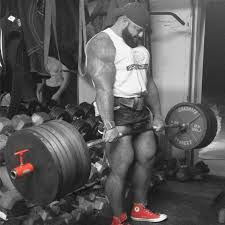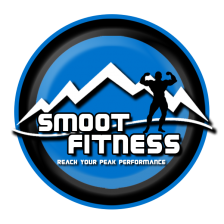
Ok so I am a firm believer that people should have a solid foundation of exercise technique built before they ever start adding weight to the bar. Using proper form is vital to your ability to work the muscles to their fullest capacity, move the largest amount of weight possible, and prevent against serious injury. However when it comes to max effort lifts, I think trying to focus on using “perfect” form is actually counterproductive. Doing so will limit your ability to generate force, lead to missed lifts, decrease self-confidence, and hinder your overall progress.
Master Form During Lower Intensity Work
I am not sure where I heard it before (I am pretty sure it was from an author on T-nation or Elite FTS), but someone said that “every rep is a chance to improve your lifting technique, and it takes thousands of reps to master any lift.” Every time you step up to the bar, you should attempt to maintain perfect technique, create the largest amount of tension possible, and generate maximum levels of force; regardless of the load lifted. It is during hypertrophy, power, or endurance phases, when the weight is lighter and the total volume is extremely high, that you can make the largest improvements in lifting technique.
This is because heavier loads stress the body to a much larger degree which makes it more difficult to maintain strict form throughout a lift. I don’t know about you, but when I sink in to the bottom position of a squat with a weight on my back that I have never lifted before, my only concern is not having the barbell staple me to the floor. The more you practice something, the more it becomes a reflex. Lifting with proper form 95 percent of the time increases the likelihood that you be able to maintain good form instinctually the other 5 percent of the time (max effort work), when you aren’t necessarily thinking about it.
Self-Doubt and Progression
Alright I want to talk briefly on the mental aspect of a max effort lift. I know from my own experience that the more I think about the weight on the bar, the fact that I could get injured, or spend time trying to get myself “perfect” before I initiate a movement, the more I start doubting myself. This is something I still struggle with today, and if you aren’t confident that you will complete a lift, you are going to miss it whether you had the necessary strength or not. Progress requires overload, overload is scary, and the amount of time you spend making sure your body is in the perfect position to start the lift is directly proportional to the amount of negative thoughts that will come flying through your mind.
And this brings us to my next point; progression. It is imperative that you follow a proper progression scheme when programming your training in order to maintain optimal performance and health now and long term. If your most recent two rep max on deadlifts was 405 pounds, throwing 600 pounds on the bar is completely ridiculous. In this scenario, I hope you are enveloped in self-doubt and fear as they are probably the only things keeping you from having a few discs shoot out of your spine. If you are following a safe and structured training template where the load gradually increases on a weekly to bi-weekly basis, you will be attempting weights that 9.5 times out of 10, you have the ability to lift. The more lifts you successfully complete, the more your confidence grows, leading to more successful PR attempts moving forward.
Become an Animal During Max Effort Attempts
 Ok so for a long time my numbers were going up very slowly and I couldn’t figure out what the problem was. My programming was solid, I was getting eight hours of sleep per night, my nutrition was on point, but for some reason my lifts progressed more slowly than budget meetings between Democrats and Republicans. I read a bunch of articles by Jim Wendler one night and came across an article he wrote on this exact topic. To make a long story short, I realized that I was making the same mistake that I am advising against now: I was focusing too much on form during my heavier lifts.
Ok so for a long time my numbers were going up very slowly and I couldn’t figure out what the problem was. My programming was solid, I was getting eight hours of sleep per night, my nutrition was on point, but for some reason my lifts progressed more slowly than budget meetings between Democrats and Republicans. I read a bunch of articles by Jim Wendler one night and came across an article he wrote on this exact topic. To make a long story short, I realized that I was making the same mistake that I am advising against now: I was focusing too much on form during my heavier lifts.
Going for a new squat PR is not the time to make sure that your feet are turned out exactly 14.8 degrees, your knees only move 1.8 inches over your toes, and your hips sink exactly five inches below parallel. Doing so will lead to the same thing that happened to me: force production suffers, which doesn’t allow you to progressively move more weight, which means there isn’t a sufficient overload, which ultimately means you aren’t getting stronger. Focus heavily (to the point of obsession) on form during lower intensity work. When you go for a max effort lift, trust that your technique is solid and put all of your energy in to setting that new PR.
Summing Up
To wrap up, I recommend everyone go check out a few lifting videos of Brandon Lilly, Mark Bell, Matt Kroc, Ed Coan, or any other big name in powerlifting. These guys squat and deadlift close to or over 1000 pounds, and there are a couple things you will notice when they go to perform these incredible feats of strength. The lifts look the exact same every time (consistent technique built through thousands and thousands of reps), and they initiate the lift a few seconds after stepping up to or under the bar. If you want to lift the most amount of weight possible, follow their lead. Step up to the bar, get tight, and just EXPLODE!!
Like What You See?
Get the Smoot Fitness Guide to Getting Stronger - FREE.


Leave a Reply